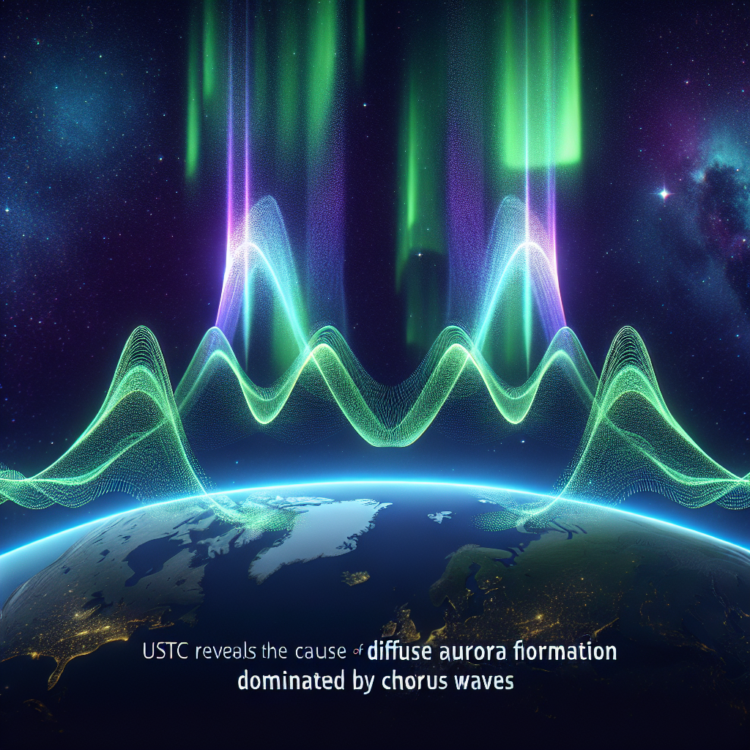Recently, a research team led by Prof. LU Quanming and Prof. GAO Xinliang from the School of Earth and Space Sciences and the Deep Space Exploration Laboratory at the University of Science and Technology of China (USTC) has revealed the underlying cause of diffuse aurora formation dominated by chorus waves in the Earth’s inner magnetosphere. Their findings, titled “Why chorus waves are the dominant driver for diffuse auroral precipitation”, were published in the journal Science Bulletin.
Recently, a research team led by Prof. LU Quanming and Prof. GAO Xinliang from the School of Earth and Space Sciences and the Deep Space Exploration Laboratory at the University of Science and Technology of China (USTC) has revealed the underlying cause of diffuse aurora formation dominated by chorus waves in the Earth’s inner magnetosphere. Their findings, titled “Why chorus waves are the dominant driver for diffuse auroral precipitation”, were published in the journal Science Bulletin.
Diffuse auroras play a crucial role in energizing the polar ionosphere and represent a strong coupling mechanism between the Earth’s magnetosphere and ionosphere. They arise from the collision of electrons with atmospheric molecules after plasma waves in the magnetosphere scatter the electrons into the loss cone through resonance scattering, causing them to precipitate into the atmosphere. Also, whistler-mode chorus waves and electromagnetic electron cyclotron harmonic (ECH) waves are considered the two most important wave modes responsible for inducing diffuse aurora formation. While both wave types are theoretically expected to contribute equally, observational data reveal that chorus waves predominantly influence formation, presenting a scientific challenge that urgently needs addressing.
Joint observations from the Van Allen Probe A satellite and DMSP satellites in the United States have found that chorus waves and ECH waves have comparable amplitude strengths and can independently cause electron precipitation in the polar regions. More importantly, a long-neglected observational phenomenon was revealed: there is a significant negative correlation between the amplitudes of the two plasma waves (Fig. 1), indicating that the amplitude of ECH waves is strongly suppressed by chorus waves. Satellite statistics further demonstrate that the suppressive effect of chorus waves on ECH waves is widespread globally (Fig. 2). Utilizing computer particle simulation methods and data from Japan’s Arase satellite, it was confirmed that chorus waves can effectively inhibit ECH waves by rapidly reshaping electron distributions.
These research findings indicate that although both chorus waves and ECH waves can cause diffuse auroras, chorus waves ultimately become the primary contributors to diffuse aurora formation due to their suppressive effect on ECH waves. The dominance of chorus waves is an inevitable consequence of the interaction between these two wave modes. These new discoveries will advance our comprehensive understanding of diffuse auroral phenomena on Earth and other planets.
Journal
Science Bulletin
Article Title
Why chorus waves are the dominant driver for diffuse auroral precipitation
Article Publication Date
15-Mar-2024




